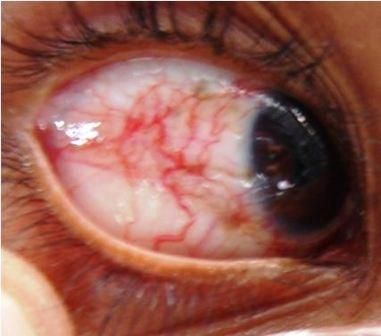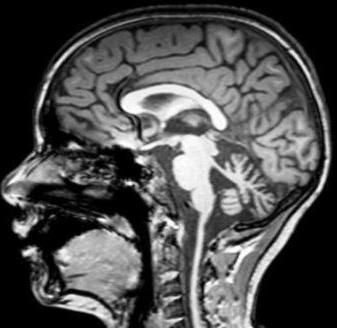Ataxia-Telangiectasia
Ataxia-telangiectasia is an autosomal recessive condition characterized by progressive cerebellar ataxia and oculocutaneous telangiectasias.

A 6-year-old girl was seen for evaluation of recurrent sinus infection. Her parents also were concerned about her progressively unsteady gait and frequent falls.
Key points: Based on clinical findings of ataxia and ocular telangiectasia (Figure 1, top) the patient was given a diagnosis of ataxia-telangiectasia (A-T). Screening for serum alpha-fetoprotein, a marker for A-T, found a concentration of 660 ng/mL (normal, <8 ng/mL). A subsequent MRI study of the brain showed marked cerebellar atrophy (Figure 2, bottom).
A-T, also known as Louis-Bar syndrome, is an autosomal recessive condition characterized by progressive cerebellar ataxia, oculocutaneous

telangiectasias, recurrent sinopulmonary disease, variable humoral and cellular immunodeficiency, and a high incidence of malignancy.
Management: There is no definitive treatment available. Recurrent sinopulmonary infections are common in most patients; immunoglobulin replacement therapy may decrease these and other infections, which can be severe. Aggressive pulmonary hygiene is recommended for patients with chronic bronchiectasis. Patients have increased sensitivity to ionizing radiation; diagnostic procedures such as X-ray and CT scans, therefore, should be limited.
Note: Ataxia usually becomes apparent by 2 years of age. It is progressive and most children with A-T are wheelchair-bound by 10 to 12 years of age. Ocular telangiectasia is not usually seen until approximately 3 to 6 years of age.